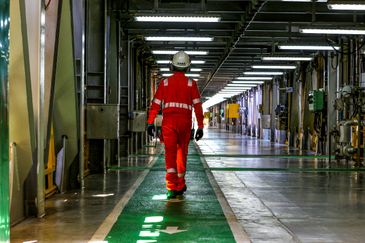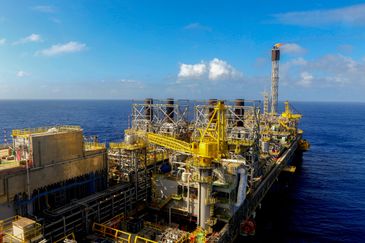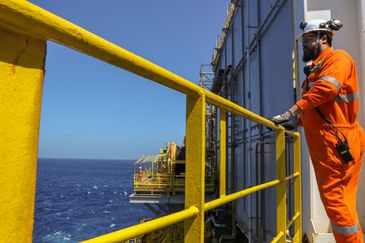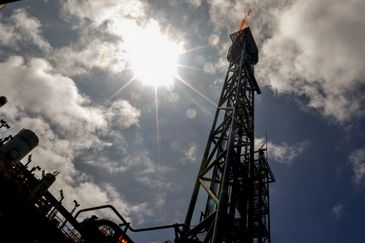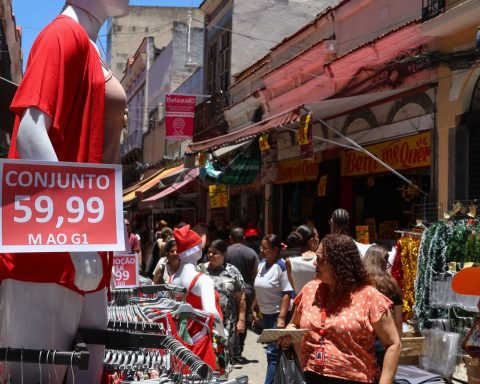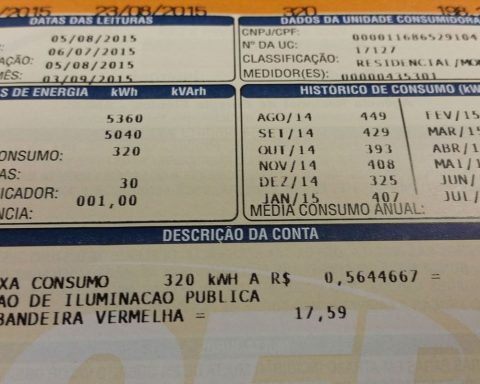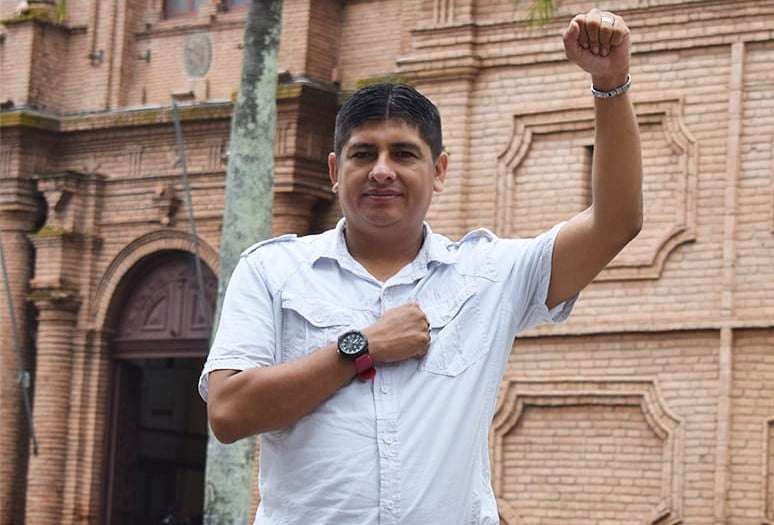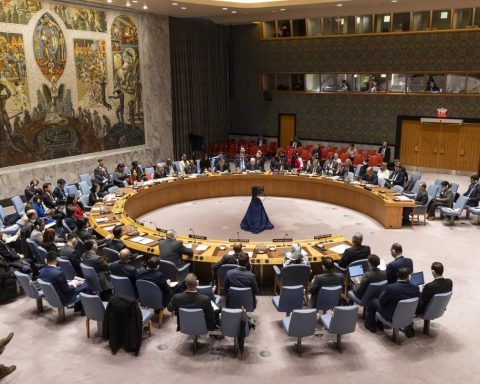Oil closed the year 2024 as the main product in Brazilian exports, taking the place of soybeans. Sales of crude petroleum oil or minerals reached US$44.8 billion, according to data released last week by the Foreign Trade Secretariat of the Ministry of Development, Industry, Commerce and Services.
The year 2024 ended with crude oil representing 13.3% of Brazil’s exports, taking the lead from soybeans which, from 2023 to 2024, saw its share fall from 15.7% to 12.7%. In 2024, soybeans generated US$42.9 billion for exporters, compared to US$53.2 billion in 2023.
Pre-salt oil is the engine that allowed oil to reach the top of the export list. According to the National Petroleum, Natural Gas and Biofuels Agency (ANP), from January to November – latest available data, the country produced 36.9 million barrels of oil per day (Mbbl/d)with 71.5% originating from the pre-salt. Looking only at data from the second half of the year, this percentage jumps to 80.3%.
Pre-salt history
Discovered in 2006, the pre-salt contributed to the country’s energy sovereignty, enabling the country to maintain itself without the need to import oil. In addition to high productivity, the wells store light oil, considered to be of excellent quality and with high commercial value.
Production began in the Jubarte field, located in the Campos Basin, on the southeast coast, in 2008. Next to the Santos Basin, this is where the reservoirs are located, drilled at a depth of 5,000 to 7,000 kilometers. To give you an idea, 7 thousand kilometers is approximately the highest point in the Andes Mountains.
Currently, the Tupi, Búzios and Mero fields represent 69% of the pre-salt origin, according to the ANP. All three are in the Santos Basin. The first to produce the Santos pre-salt was Tupi, the largest production asset in the country, reaching 1.1 million barrels per day in the third quarter of 2024.
The history of pre-salt exploration and production is confused with the recent years of Petrobras, a state-owned company that accounted for 98% of pre-salt production in November 2024, including wells operated in a consortium. Of all the company’s production, around 80% originates in the pre-salt.
Among the main oil companies that operate in a consortium with Petrobras are, among others, the multinationals Shell (Anglo-Dutch), TotalEnergies (French) and CNDOC (Chinese).
According to the company, the pre-salt, which is expected to reach peak production in the 2030s, has a strategic role in the energy transition. According to the state-owned company, technologies developed by Petrobras mean that the oil extracted from the pre-salt has carbon dioxide (CO²) emissions – one of the causes of the greenhouse effect and global warming – 70% lower than the world average.
Geology
According to Petrobras, the pre-salt are sedimentary rocks formed more than 100 million years ago with the separation of the current South American and African Continents. With this separation, large depressions emerged that gave rise to several lakes, which were later connected to the oceans.
“In the deepest regions of these lakes, large quantities of organic matter from microscopic algae began to accumulate. This organic matter, mixed with sediments, formed what are the rocks that generate pre-salt oil and gas”, explains the website of the company.
Because of the arid climate at that time, the intense evaporation of sea water caused the accumulation of salts, which created the pre-salt layer, a type of protection that prevented the oil from escaping and reaching the surface”, he adds.
Technology
The distance from the pre-salt reservoirs to the coast and the depth were challenges for Petrobras to find, remove and transport the oil to the continent, causing the company to develop technologies to overcome logistical and exploratory difficulties. One example is the processing technique that helped to clearly show the position of the pre-salt rock.
In the exploration and production journey in the pre-salt, the set of technologies developed by Petrobras earned the state-owned company awards from the Offshore Technology Conference (OTC), a kind of world elite research center for exploration at sea, in the years 2015, 2019, 2021 and 2023.
One technology used in the Búzios field is systematic 4D seismic acquisition. “By emitting ultrasonic waves that reflect on the reservoir and return with data, we are able to define height, length and depth, building an image of the reservoir”, explains the company.
“Based on systematic seismic surveys and studies to examine the configuration of the reservoir, we were able to decide the next steps, such as where to drill a certain type of well, leveraging production and reducing costs”, he adds.
Among the currently prominent technologies are those that reinject the C0² resulting from production into the reservoir itself. It is a way to avoid the release of pollutants into the atmosphere and reduces the company’s “carbon footprint”.
Look here interesting facts about an oil platform,
Revenues
The discovery of the pre-salt was so significant for Brazilian oil production potential that it led the government to change the regime that authorized companies to explore submerged wealth.
Therefore, in the pre-salt areas the sharing regime is in force. In this model, the production of surplus oil (balance after payment of costs) is divided between the company and the Union. When the auction authorizing exploration is held, the company that offers the largest share of profit to the Union wins. .
It is different from the concession model (valid in post-salt), when the risk of investing and finding – or not – oil lies with the concessionaire, which becomes the owner of all the oil and gas that may be discovered. In return, in addition to the signature bonus upon winning the auction, the oil company pays royalties and special participation (in the case of large production fields).
Along with the sharing model, a state-owned company was created, Pré-Sal Petróleo (PPSA), linked to the Ministry of Mines and Energy, which represents the Union in receiving revenue.
In 2024 alone, PPSA received R$10.32 billion from the commercialization of the Union’s portions of oil and natural gas in five production sharing contracts and in a production agreement in the Tupi field. The amount is around 71% higher than that collected in 2023 (R$6.02 billion).
According to the state-owned company, by 2034, projections indicate a accumulated revenue of R$506 billion for the Union.
New frontiers
With the pre-salt forecast to reach its peak in the 2030s, the national oil industry, led by Petrobras, is turning its attention to new oil frontiers where, it is believed, there may be great production potential.
One of them is the call equatorial margin, on the north Brazilian coastwhich is awaiting a favorable decision from the Brazilian Institute of the Environment and Renewable Natural Resources (Ibama), a body linked to the Ministry of Environment and Climate Change (MMA).
Another region is Pelotas Basin, on the coast of the South Region. One factor that explains the region’s interest in the region are discoveries of oil wells in Uruguay and on the coast of Africa – Namibia and South Africa. The geological conditions of the regions, experts point out, are similar, as the continents were united tens of thousands of years ago. of years.
According to Petrobras, by 2029 the company will invest US$79 billion in the exploration of new oil and gas frontiers, with 40% for the exploration of the South and Southeast margin, 38% on the equatorial margin and the remainder in other countries.

